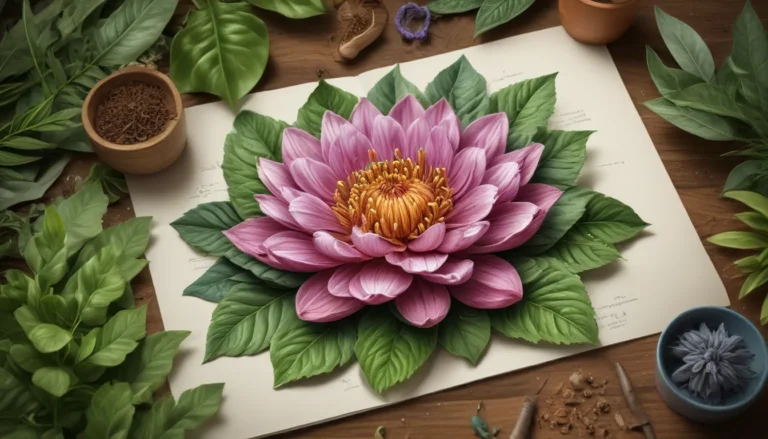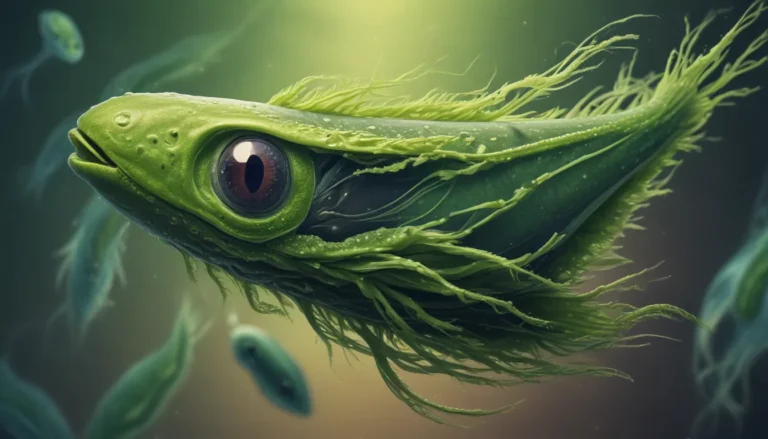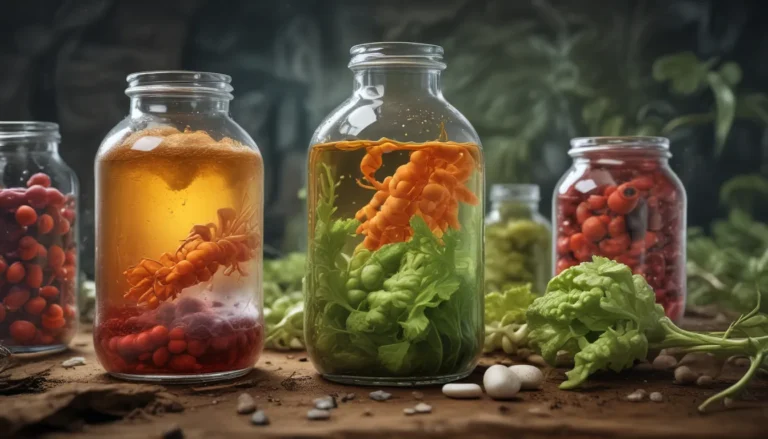A Note About Images: The images used in our articles are for illustration purposes only and may not exactly match the content. They are meant to engage readers, but the text should be relied upon for accurate information.
Welcome to the mesmerizing world of cellular transport mechanisms, where the microscopic processes within our cells work tirelessly to maintain balance and support life. In this enlightening article, we will delve into 18 unbelievable facts about cellular transport that will leave you in awe of the complexity and ingenuity of the cellular world. From the fascinating interactions of molecules to the intricate mechanisms that keep our cells functioning, there is much to uncover in this captivating journey.
The Intricate Dance of Cellular Transport
- Passive Transport:
-
In the bustling world of cellular transport, some mechanisms don’t require energy, like passive transport. This process, including diffusion and osmosis, allows molecules and ions to move effortlessly down their concentration gradients.
-
Active Transport:
- On the other hand, active transport demands energy in the form of ATP to move molecules against their concentration gradients. This essential process ensures ion balances, nutrient transfer, and waste removal within cells.
Discovering the Marvels of Cellular Mechanisms
- Endocytosis:
-
Step into the realm of endocytosis, where cells engulf large molecules by forming vesicles. This process is vital for internalizing substances from the external environment.
-
Exocytosis:
-
Witness the magic of exocytosis, as cells release molecules by merging vesicles with the plasma membrane. This mechanism is critical for the secretion of hormones and neurotransmitters.
-
Facilitated Diffusion:
- Explore the world of facilitated diffusion, where carrier proteins or channel proteins assist specific molecules in crossing the cell membrane. This process enhances the rate of diffusion for larger or charged molecules.
Unveiling the Secrets of Specialized Transport
- The Sodium-Potassium Pump:
-
Meet the sodium-potassium pump, a membrane protein that uses active transport to uphold the concentration gradients of sodium and potassium ions. Its role in nerve cell function and muscle contraction is paramount.
-
Phagocytosis:
-
Witness the unique process of phagocytosis, where specialized immune cells engulf solid particles like bacteria or cellular debris. This mechanism is crucial for maintaining cellular health.
-
Pinocytosis:
- Dive into the world of pinocytosis, also known as “cell drinking,” where cells take in fluid and dissolved solutes through small vesicles. This process aids in nutrient uptake and fluid removal.
Navigating Secondary Active Transport
- Symporters and Antiporters:
-
Encounter transport proteins known as symporters and antiporters, which participate in secondary active transport. While symporters move molecules in the same direction, antiporters transport molecules in opposite directions.
-
Aquaporins:
-
Discover aquaporins, channel proteins that facilitate the transport of water molecules across the cell membrane. These proteins play a vital role in water balance and osmotic pressure regulation.
-
Selective Permeability:
- Learn about the cell membrane’s selective permeability, allowing certain molecules to pass through while blocking others. This property ensures proper nutrient uptake, waste elimination, and cellular homeostasis.
Delving Deeper into Cellular Transport Dynamics
- Ion Channels:
-
Explore the world of ion channels, membrane proteins responsible for transporting ions across the cell membrane. These channels are essential for nerve impulse transmission, muscle contraction, and cell signaling.
-
Carrier Proteins:
-
Uncover the role of carrier proteins, or transporters, in moving specific molecules across the cell membrane. These proteins undergo conformational changes to facilitate molecule transport.
-
Vesicular Transport:
- Embark on a journey through vesicular transport, where molecules move within vesicles formed from the cell membrane. This process is vital for intracellular trafficking of proteins and other cellular components.
Journeying Through Specialized Cellular Pathways
- The Blood-Brain Barrier:
-
Learn about the blood-brain barrier, a specialized barrier formed by capillary wall cells in the brain. This barrier selectively controls the passage of substances into the brain, ensuring its protection and proper functioning.
-
Transcytosis:
-
Witness the process of transcytosis, where molecules are transported across the cell through endocytosis on one side and exocytosis on the other. This mechanism aids in transporting substances across epithelial cells for nutrient absorption.
-
Cotransport:
- Explore cotransport, a coupled transport process where the movement of one molecule is linked to the movement of another across the cell membrane. This mechanism is crucial for the uptake of nutrients like glucose and amino acids.
Unraveling Cellular Transport Mysteries
- Lipid Rafts:
- Discover lipid rafts, specialized regions within the cell membrane rich in cholesterol and sphingolipids. These rafts play a key role in organizing lipids and proteins for efficient cellular transport.
In conclusion, the intricacies of cellular transport mechanisms are a testament to the marvels of life at the molecular level. By understanding the diverse processes that govern cellular interactions, we gain insight into the fundamental principles that sustain life itself. Exploring the world of cellular transport offers a glimpse into the remarkable coordination and communication within our cells, paving the way for groundbreaking discoveries and advancements in various scientific fields.
FAQs: Your Portal to Cellular Transport Knowledge
- What is cellular transport?
-
Cellular transport refers to the movement of substances across the cell membrane or within the cell, essential for maintaining internal balance, exchanging nutrients, and eliminating waste products.
-
What are the different types of cellular transport mechanisms?
-
The main types of cellular transport mechanisms include diffusion, osmosis, facilitated diffusion, active transport, endocytosis, and exocytosis.
-
How does diffusion work in cellular transport?
-
Diffusion is the passive movement of particles from an area of higher concentration to an area of lower concentration. It occurs without the need for energy until equilibrium is reached.
-
What is the role of active transport in cellular transport mechanisms?
-
Active transport involves moving molecules or ions against the concentration gradient, requiring energy in the form of ATP. This process is essential for transporting substances across the cell membrane.
-
How do endocytosis and exocytosis function in cellular transport?
-
Endocytosis involves cells engulfing external substances, while exocytosis releases substances from intracellular vesicles. These mechanisms are crucial for transporting molecules in and out of the cell.
-
How is cellular transport important in maintaining homeostasis?
- Cellular transport mechanisms regulate the balance of substances such as ions, water, and nutrients within cells, crucial for maintaining a stable internal environment and overall body homeostasis.
As you embark on your journey through the mesmerizing world of cellular transport, each discovery opens a new window into the intricate workings of our cells. With every fact uncovered and mystery unraveled, the realm of cellular transport beckons you to explore further, inspiring curiosity and fueling the quest for knowledge. Join us in unraveling the secrets of cellular transport and uncovering the wonders that lie within the microscopic universe!






